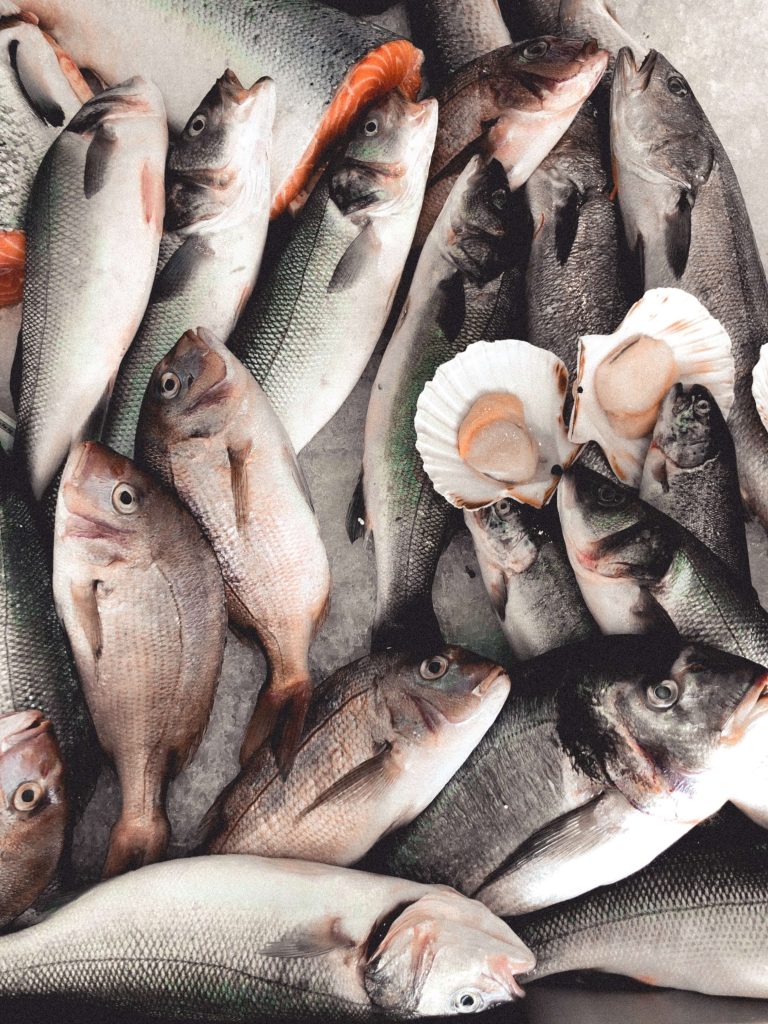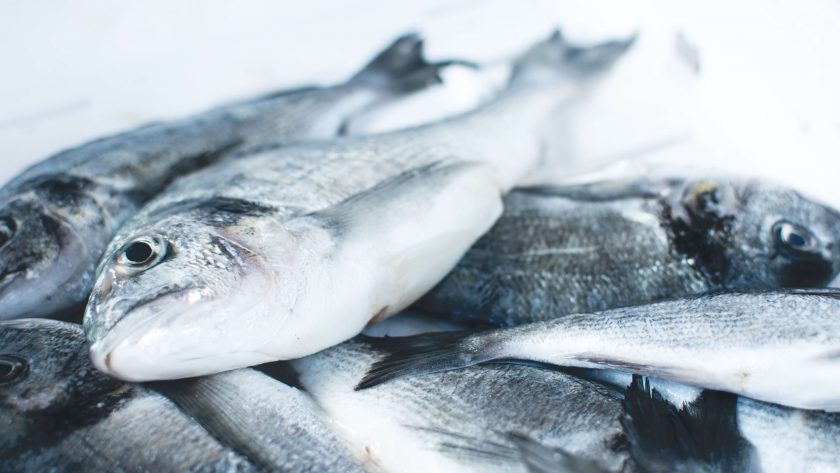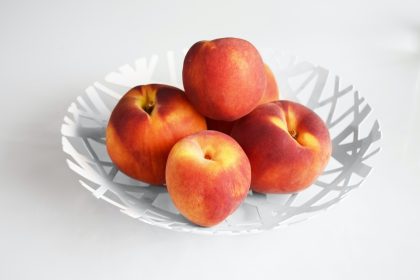Have you ever had the pleasure of indulging in the glorious delight that is fish cake? Let me take you on a journey through the enchanting world of this culinary gem, beloved by countless souls across the globe, particularly in the enchanting lands of East Asia.
As someone who holds a deep affection for fish cake, allow me to regale you with my heartfelt thoughts and personal encounters with this mouthwatering delicacy 😃
Close your eyes and imagine the essence of fish cake. It is a masterful creation, brought to life by finely minced fish intertwined with a symphony of flour, starch, and a medley of tantalizing ingredients such as vibrant vegetables and aromatic spices.
- The Flavor Profile of Fish Cakes
- Ingredients That Affect Its Taste
- Ways Fish Cakes are Cooked
- Common Serving Styles for Fish Cakes
- The Texture of Fish Cakes
- Frequently Paired Flavors
- The History of Fish Cakes
- Health Benefits of Eating Fish Cakes
- Cultural Significance of Fish Cakes
- What is a fish cake?
- What does fish cake taste like?
- Is the taste of fish cake overly fishy?
- Are fish cakes spicy?
- Are fish cakes suitable for people who don’t like fish?
- Can fish cakes be used in other dishes?
- Are fish cakes healthy?
- Can I make fish cakes at home?
- Can I freeze fish cakes?
This harmonious amalgamation of flavors is meticulously shaped into an array of captivating forms-patties, spheres, and more-before embarking on a transformative journey through the hands of culinary artists.
Whether gently bathed in bubbling broth, lovingly pan-fried to golden perfection, or embraced by the gentle embrace of an oven’s warmth, each culture weaves its own narrative into this culinary tale, imparting a unique touch that dances upon the taste buds.
Now, let us venture into the realm of taste. As you take your first bite, you are greeted by a delicate melody of flavors that caress your palate. The gentle notes of the sea resonate, harmonizing with hints of sweetness or savory undertones, depending on the artistry of its preparation.
It is a delicate balance, skillfully crafted to please even the most discerning taste buds. The essence of the ocean is present, but in a mellow and comforting embrace that invites you to savor each moment, each delectable morsel.
Yet, dear friend, the allure of fish cake extends beyond its taste. Allow me to divulge the secrets of its texture, the ethereal dance that unfolds with each bite. Imagine a sublime symphony of sensations bouncy, springy, and delightfully chewy.
As your teeth sink into the tender embrace of this culinary creation, a subtle firmness rewards your senses, bestowing an unforgettable experience. It is a texture that elevates fish cake to a realm of its own, captivating and beguiling all who partake.
Fish cake, my dear compatriots, is an extraordinary delight that transcends mere sustenance. It is a dish that enchants seafood aficionados and curious souls alike. Whether relished as a heavenly snack, an enticing appetizer, or a show-stopping main course, it promises to delight and leave a lasting impression upon your very soul.
The marriage of flavors and textures will enthrall you, and the joy it imparts will linger long after the last morsel has been savored.
So, my friend, I implore you, embark upon this culinary adventure and allow fish cake to ignite a passionate affair with your taste buds.
The Flavor Profile of Fish Cakes
Ah, fish cakes! These delectable seafood wonders have captured the hearts and palates of people all around the globe. Just imagine sinking your teeth into a succulent blend of fish, potatoes, and an array of tantalizing spices. The taste is simply out of this world, and I’m here to take you on a mouthwatering journey through the flavors of fish cakes.
Now, let’s talk about the star of the show – the fish itself. Picture a delicate dance of flavors as salmon, cod, haddock, or tilapia infuse the dish with their unique characteristics. Each fish brings its own distinct essence, lending its mark to the symphony of tastes that make up the fish cake.
As you take your first bite, you’ll be greeted by a gentle, mild sweetness that’s an inherent trait of the fish. But wait, there’s more! The potatoes and spices join in, effortlessly coaxing out the fish’s natural sweetness, enhancing it to perfection. It’s a harmonious blend that dances across your taste buds.
And let’s not forget the touch of saltiness that adds an extra dimension to this culinary masterpiece. With just the right amount of salt, fish cakes strike the perfect balance, ensuring every bite is a tantalizing fusion of flavors.
Now, let’s talk texture, because that’s where the magic truly happens. Imagine sinking your teeth into a fish cake with a glorious crunch on the outside, revealing a tender, moist interior. The contrast is delightful—a symphony of textures that adds a whole new layer of enjoyment to each mouthful.
But wait, there’s more to this culinary escapade! The medley of onions, garlic, and fragrant herbs lends its voice to the symphony of flavors. With each bite, you’ll experience an explosion of aromatic notes that further elevate the taste of these exquisite fish cakes.
In a nutshell, fish cakes possess a mild sweetness with a hint of salty allure, wrapped in a texture that can range from crispy perfection to soft, moist delight. The specific flavor experience may vary, influenced by the type of fish, the artistry of seasoning, and the techniques used in their preparation.
It’s no wonder that fish cakes have become a beloved seafood dish, cherished and savored in countless ways. Okay then, if you’re interested in the protein amount of one shrimp, I put out a killer write-up on that. Let’s become current again.
So, whether you’re savoring them by the seaside on a balmy summer evening or relishing them as a comforting winter treat, fish cakes will never fail to transport you to a world of pure culinary bliss. Indulge in their flavors, embrace their textures, and allow yourself to be captivated by the sheer magic that lies within each bite.
Ingredients That Affect Its Taste
When it comes to fish cakes, the taste can vary widely depending on the ingredients used, as well as the preparation and seasoning. Here are some of the key ingredients that can affect the taste of fish cakes:
Type of Fish
The type of fish used in the cakes can have a significant impact on their flavor. Fish that are oily and rich in flavor, like salmon or mackerel, can give the fish cakes a deep, savory taste. On the other hand, using white fish like cod or haddock can result in a milder, more delicate taste.
Filler Ingredients
In addition to the fish itself, fish cakes usually contain filler ingredients like breadcrumbs, mashed potatoes, or vegetables. These filler ingredients can help bind the fish together and create a more substantial texture. However, they may also impact the taste of the cakes. For example, using mashed potatoes as a filler can result in a softer, creamier texture, while adding vegetables like onions or peppers can give the cakes a more complex flavor profile.
Seasoning
Finally, seasoning is a crucial factor in determining the taste of fish cakes. Seasonings like salt, pepper, and herbs can help bring out the natural flavors of the fish and create a more balanced taste. Some recipes also call for spices like paprika or cayenne pepper, which can add some heat to the cakes.
By seasoning your fish cakes, the key is to strike a balance between enhancing the taste of the fish and not overpowering it with strong flavors.
Overall, there are many different factors that can affect the taste of fish cakes, from the type of fish used to the seasoning and filler ingredients. By experimenting with different combinations of ingredients and seasoning, you can create unique and delicious fish cakes that suit your taste preferences.
Likewise, in the event that you were curious if you can freeze provolone cheese, I have recently composed a fantastic article on it. Now let’s re-focus on our topic.
Ways Fish Cakes are Cooked
Fish cakes can be prepared in many different ways, depending on the region and culinary traditions. Here are some common ways fish cakes are cooked:
- Fried: This is a popular way to cook fish cakes in many cultures. The cakes are typically dipped in a batter and fried until golden brown. This method creates a crispy exterior while keeping the inside moist and flavorful.
- Baked: Baking fish cakes is another common cooking method. The cakes are placed on a baking sheet and baked until they are cooked through. This method generally creates a more tender and moist cake.
- Grilled: Grilling fish cakes is a popular method in some coastal areas. The cakes are cooked on a hot grill until they are browned on the outside and cooked through.
- Steamed: Steaming fish cakes is a healthier cooking method that helps retain the natural moisture of the fish. The cakes are placed in a steamer basket and cooked until they are fully cooked through.
- Boiled: Boiling fish cakes is a simple and easy cooking method. The cakes are placed in a pot of boiling water and cooked until they float to the surface, indicating that they are fully cooked.
Each cooking method can result in a unique taste and texture for the fish cakes. Experimenting with different methods can help you find the one you like best.

Common Serving Styles for Fish Cakes
Speaking the fish cakes, there are endless possibilities for serving styles. Here are a few common ways that I enjoy my fish cakes:
- Alone with Tartar Sauce: Some may argue that the best way to enjoy the flavor of a fish cake is on its own. In this case, I like to serve my fish cakes with a side of tartar sauce. The creamy tartness of tartar sauce complements the savory flavor of the fish cake quite well. It’s a classic pairing and it never fails.
- In a Burger: If you’re not in the mood for a traditional burger, try swapping in a fish cake instead. I love to put my fish cake between two buns with a slice of sharp cheddar cheese, lettuce, tomato, and a dollop of mayo. It’s a delicious and healthy alternative to your typical beef burger.
- With Mashed Potatoes: Fish cakes go great with mashed potatoes because they balance out the flavors and textures nicely. The soft and buttery potatoes act as a neutral base that allows the fish cake to shine through. It’s a comforting and filling meal that’s perfect for a cozy night in.
- On a Salad: Looking for a light and fresh way to enjoy fish cakes? Try placing them atop a bed of mixed greens with your favorite veggies and a light dressing. This is a great way to use up any leftover fish cakes in a healthy and satisfying way. Incidentally, are you aware microwave cooking is possible with Uncle Ben’s rice? I recently wrote an article on the topic, so let’s move on.
As you can see, fish cakes are a versatile dish that can be enjoyed in many different ways. Whether you’re in the mood for something classic or something more unique, there’s a serving style out there that will suit your tastes.
The Texture of Fish Cakes
Remember! The texture is just as important as the taste. Generally speaking, fish cakes have a texture that is firm, yet slightly springy. They should be moist and tender on the inside, with a slightly crispy outer layer.
Here are some more details on the texture of fish cakes:
- Moistness: One of the defining features of a good fish cake is its moistness. The fish and potato mixture should be moist and tender, but not so much that the cake falls apart.
- Springiness: Fish cakes should have a slight springiness or bounce when you bite into them. This is a sign that the cake has the right texture and hasn’t been overcooked.
- Crispiness: A good fish cake should have a lightly crispy outer layer that adds a nice contrast to the soft, moist interior. This can be achieved through shallow-frying or baking the cakes until golden brown.
- Uniformity: Finally, the texture of a fish cake should be consistent throughout. There should be no uncooked spots or overly hard parts that detract from the overall experience.
In my experience, the texture of fish cakes can vary depending on the recipe and cooking method. Some fish cakes I’ve tried have been more crumbly than springy, while others have been too dry or chewy.
Going off of that, if melting queso fresco is something that interests you, I just pinned an outstanding article. Ultimately, the texture is a matter of personal preference, but if you’re looking for a classic fish cake, aim for one that is moist, slightly springy, and lightly crispy on the outside.
One of the joys of fish cakes is their versatility in pairing with other flavors. Here are some of my favorite flavor combinations to try with your fish cakes:
Frequently Paired Flavors
Lemon
Lemon goes well with many seafood dishes, including fish cakes. A squeeze of fresh lemon juice over your fish cakes adds a bright, tangy flavor that complements the fish perfectly.
Tartar Sauce
Tartar sauce is a classic condiment for fish dishes, including fish cakes. The creamy, tangy flavor complements the crispy exterior of the fish cakes nicely.
Remoulade
Remoulade is a mayonnaise-based sauce that is similar to tartar sauce but with the addition of mustard, herbs, and pickles. The tangy, slightly spicy flavor of remoulade pairs well with the mild flavor of fish cakes.
Coleslaw
Coleslaw is a classic side dish for fish and seafood. The cool and crunchy texture of the coleslaw complements the soft and tender texture of the fish cakes.
Sweet Chili Sauce
For those who like a little bit of heat, sweet chili sauce is a great option. The sweet and spicy flavor of the sauce pairs well with the mild flavor of the fish cakes.
Keep in mind that these are just a few examples, and there are plenty of other flavors that can work well with fish cakes. Experiment with different condiments and sides to find your perfect pairing!
The History of Fish Cakes
Fish cakes have been a staple dish in various cultures for centuries. They were originally created as a way to use up leftover fish and transform them into a satisfying and tasty meal. The exact origin of fish cakes is unknown, but there are references to similar dishes in ancient Roman, Greek, and Chinese cuisines.
During the medieval period, fish cakes were commonly eaten in Europe, particularly in coastal regions such as Scandinavia and England. In fact, fish cakes were so popular in England that they became a staple food during times of war and hardship, as they were cheap and easy to make.
As trade and exploration brought new ingredients and cooking methods to Europe, the recipe for fish cakes evolved. The addition of potatoes, breadcrumbs, and other ingredients transformed the dish into a heartier and more filling meal.
In modern times, fish cakes are enjoyed all over the world, from Asia to Europe to the Americas. They are often served as a main course or appetizer, and can be made with a variety of different types of fish and flavorings.
Exact ingredients and preparation methods for fish cakes may vary among different cultures and regions, one thing remains the same: their delicious taste and versatility in the kitchen. Whether you enjoy them as a savory snack or a full meal, fish cakes are a beloved dish with a rich history.
Health Benefits of Eating Fish Cakes
As an avid fish cake enthusiast, I’ve done some research on the potential health benefits of incorporating this delicious dish into your diet. Here are a few reasons why you may want to consider adding fish cakes to your meal rotation:
- Great source of protein: Fish cakes are typically made with fish such as salmon, cod, or haddock, which are all excellent sources of protein. As our bodies use protein to build and repair tissues, consuming enough protein is crucial to overall health and wellness.
- Rich in omega-3 fatty acids: Many types of fish used in fish cakes, such as salmon and tuna, are rich in omega-3 fatty acids. These healthy fats have been linked to a range of potential health benefits, including improved heart health, reduced inflammation, and improved brain function. Taking that thought forward, if you’re wondering how many calories are in birria tacos, recently I pinned a great article about it.
- May aid in weight management: Fish cakes can also be a helpful aid for those looking to manage their weight. Fish is a low-calorie, high-protein food, meaning it can help you feel fuller for longer periods and reduce overall calorie intake.
- Can improve cognitive function: The omega-3 fatty acids found in fish are also associated with improved cognitive function and memory retention. Consuming fish cakes regularly may help sharpen your mind and keep you mentally sharp.
It’s important to note that the health benefits of fish cakes may vary depending on the specific recipe and ingredients used, it’s clear that including this tasty seafood dish in your diet can have some positive effects on your overall health.
| Benefit | Details |
|---|---|
| Source of protein | Fish cakes are made with fish, which is a great source of protein. |
| Rich in omega-3s | Many types of fish used in fish cakes are rich in omega-3 fatty acids. |
| May aid in weight management | Fish is a low-calorie, high-protein food that can help you feel fuller for longer. |
| Can improve cognitive function | Fish’s omega-3 fatty acids are associated with improved cognitive function and memory. |
So next time you’re in the mood for a tasty and nutritious meal, consider giving fish cakes a try!
Cultural Significance of Fish Cakes
Fish cake is a beloved dish that can be traced back to various cultures around the world. Each culture has its own unique way of preparing and cooking fish cakes, but one thing remains the same – it is a culturally significant dish that has been passed down from generation to generation.
In many Asian countries, fish cakes are a staple in their cuisine. For example, in Japan, fish cakes are known as “kamaboko” and are often used as a topping for udon noodles or enjoyed as a snack on their own. Meanwhile, in Korea, fish cakes are called “odu” and are a common ingredient in the popular street food dish tteokbokki.
In Scandinavian countries, fish cakes are a popular comfort food and are often made with salted cod or haddock. They are typically served with a side of boiled potatoes, creamy dill sauce, and lingonberry jam.
In England, fish cakes are considered a traditional working-class dish, made using mashed potatoes and inexpensive white fish like cod or haddock. They are often served with peas, chips, and tartar sauce.
In addition to being a beloved dish… Well, fish cakes also have cultural significance in certain societies. In Korea, fish cakes are often given as a gift during the Lunar New Year as it symbolizes abundance and prosperity. Similarly, in Japan, fish cakes are often used as offerings during religious ceremonies.
Overall, the cultural significance of fish cakes varies across different countries, but one thing remains constant – it is a dish that brings people together and is enjoyed by many.
What is a fish cake?
A fish cake is a popular culinary dish made from fish or seafood that has been minced or finely ground and mixed with various ingredients such as flour, starch, vegetables, herbs, and spices. It is then formed into a patty or cake shape and cooked by boiling, steaming, or frying.
What does fish cake taste like?
The taste of fish cake can vary depending on the type of fish used, the ingredients added, and the cooking method. However, in general, fish cakes have a mild and savory flavor with a hint of seafood. They often have a delicate and slightly sweet taste that is complemented by the seasonings and spices used in the recipe.
Is the taste of fish cake overly fishy?
No, fish cakes do not typically have an overpowering fishy taste. The fish flavor is usually subtle and balanced with other ingredients. If prepared properly, the fishiness should not be overwhelming, making it an enjoyable dish even for those who are not big fans of strong seafood flavors.
Are fish cakes spicy?
Fish cakes can be prepared with varying levels of spiciness depending on the recipe. Some versions may include spices such as chili flakes, cayenne pepper, or hot sauce, adding a touch of heat to the dish. However, not all fish cakes are spicy, and many recipes keep the flavors more on the milder side.
Are fish cakes suitable for people who don’t like fish?
Fish cakes can be a good option for people who are not particularly fond of the strong taste of fish. The minced or finely ground fish used in fish cakes, along with the other ingredients, can help to mellow out the fish flavor and make it more palatable. The addition of herbs, spices, and vegetables can further enhance the overall taste, making it enjoyable for a wider range of palates.
Can fish cakes be used in other dishes?
Yes, fish cakes are versatile and can be used in various ways. They can be enjoyed on their own as a main dish or served as a side dish. Fish cakes can also be added to soups, stews, salads, sandwiches, and sushi rolls, among other dishes, to provide additional flavor and texture.
Are fish cakes healthy?
The nutritional profile of fish cakes can vary depending on the specific recipe and cooking method. Fish itself is a good source of lean protein and essential omega-3 fatty acids. However, the additional ingredients used in fish cakes, such as flour and oil for frying, may increase the calorie and fat content. Baking or steaming fish cakes can be healthier alternatives to frying. Speaking of which, if you’re curious about the calorie count in a McDonald’s large fries, I just shared some great information.
Can I make fish cakes at home?
Yes, fish cakes can be easily made at home using fresh or frozen fish, along with various other ingredients. There are numerous recipes available online that provide step-by-step instructions for making fish cakes. This allows you to control the quality of ingredients and tailor the flavors to your liking. Experimenting with different fish types and seasonings can also be a fun culinary adventure.
Can I freeze fish cakes?
Yes, fish cakes can be frozen for later use. Once cooked, allow them to cool completely, wrap them tightly in plastic wrap or place them in a freezer bag, and store them in the freezer. Frozen fish cakes can be reheated by baking, grilling, or pan-frying them until heated through. It’s advisable to consume them within a few months





